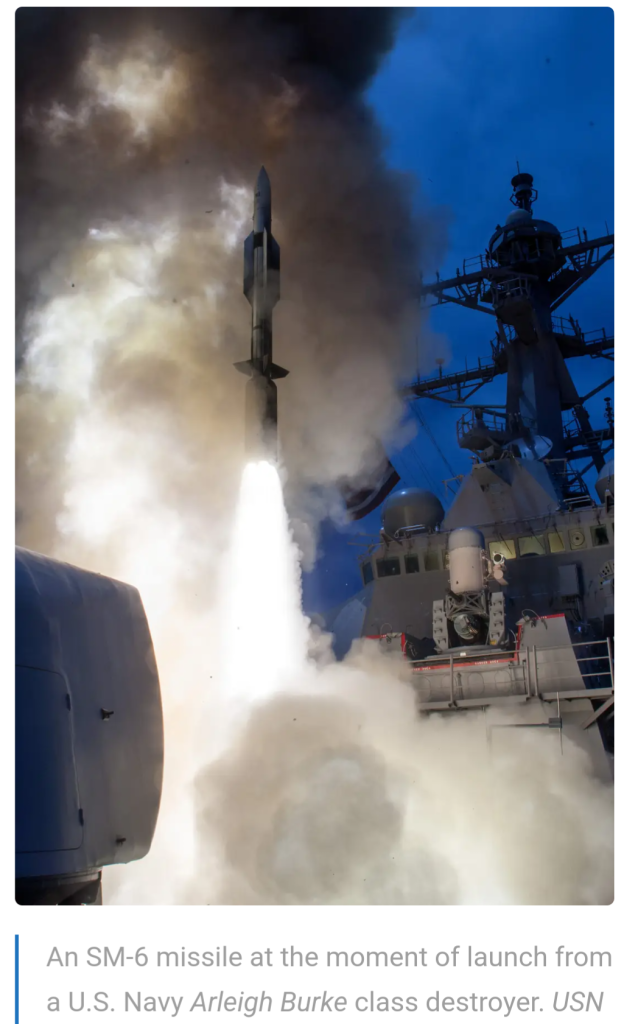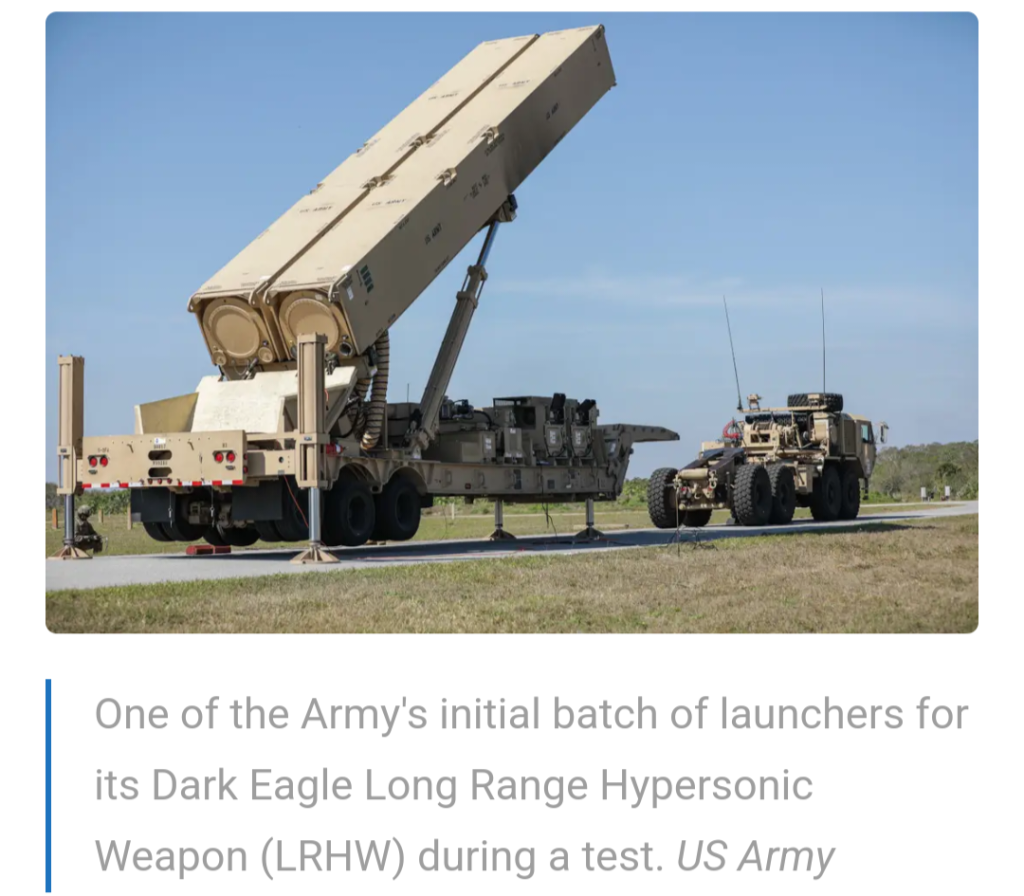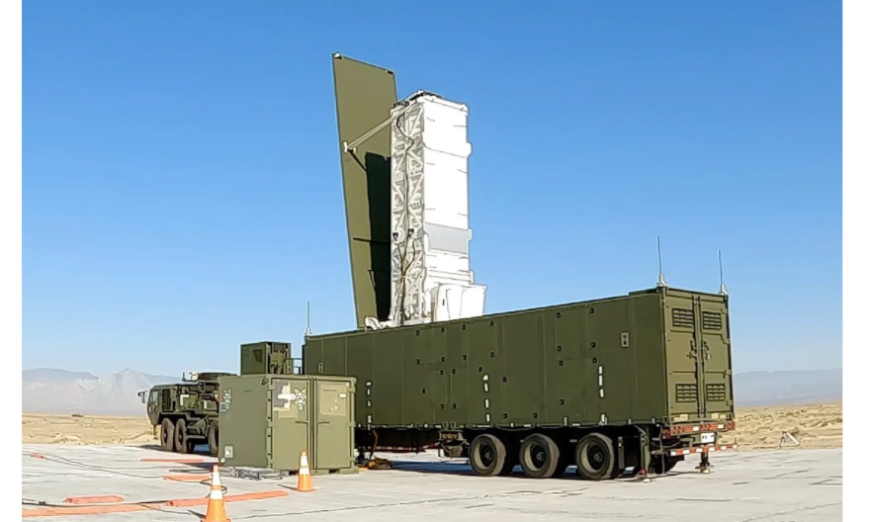Mid-Range Capability system. The U.S. Army says it has now successfully fired Tomahawk and SM-6 missiles from its new ground-based launchers.
The U.S. Army says it has demonstrated the operational capability of its newest ground-based missile launcher with the system’s recent successful firing of a Tomahawk land-attack cruise missile. This follows a test launch of a multi-purpose SM-6 missile earlier this year from what is officially known as the Typhon Weapon System. The service currently has one so-called Mid-Range Capability battery equipped with Typhon, which has four trailer-based launchers and other supporting equipment.
The Army’s Rapid Capabilities and Critical Technologies Office (RCCTO) announced the Tomahawk launch on June 28, but the actual test had occurred the day before. This comes just over six months after the service accepted delivery of the first Typhon launchers and other components of its first Mid-Range Capability (MRC) battery from Lockheed Martin.
“This test follows the successful launch of an SM-6 missile from the Mid-Range Capability system earlier this year, confirming the full operational capability of the system,” according to a brief statement from RCCTO.
Army officials have said in the past that their goal is to reach at least some level of true operational capability with the first MRC battery before the end of Fiscal Year 2023 this September.
A complete Typhon Weapon System battery consists of four launchers and a command post, all on trailers, as well as reload and support vehicles, according to details the Army has released in the past. Targeting information is provided by offboard sources.
The Army currently expects Typhon to be employed primarily against land-based targets using either Tomahawk or SM-6. At the same time, anti-ship optimized variants of Tomahawk exist. Originally designed as a surface-to-air missile, SM-6 has a demonstrated anti-ship capability, too, and significantly longer-range and otherwise more capable versions are in development. As it stands now, the U.S. military says that the SM-6 family is its only real capability for engaging incoming highly-maneuverable hypersonic weapons.
Altogether, the door is already wide open to the possibility of future Army MRC batteries being employed against a wide variety of targets in the future. These same launchers are already expected to be part of the expanded air and missile defenses that the U.S. military is working to put in place on the strategic U.S. island territory of Guam.
In addition, the Typhon launchers are derived from the Mk 41 Vertical Launch System (VLS) in use on various U.S. Navy and foreign warships. This launcher can already fire a wide array of containerized missiles, and other types could be integrated into it in the future.
“This test follows the successful launch of an SM-6 missile from the Mid-Range Capability system earlier this year, confirming the full operational capability of the system,” according to a brief statement from RCCTO.
Army officials have said in the past that their goal is to reach at least some level of true operational capability with the first MRC battery before the end of Fiscal Year 2023 this September.
A complete Typhon Weapon System battery consists of four launchers and a command post, all on trailers, as well as reload and support vehicles, according to details the Army has released in the past. Targeting information is provided by offboard sources.
The Army currently expects Typhon to be employed primarily against land-based targets using either Tomahawk or SM-6. At the same time, anti-ship optimized variants of Tomahawk exist. Originally designed as a surface-to-air missile, SM-6 has a demonstrated anti-ship capability, too, and significantly longer-range and otherwise more capable versions are in development. As it stands now, the U.S. military says that the SM-6 family is its only real capability for engaging incoming highly-maneuverable hypersonic weapons.

Altogether, the door is already wide open to the possibility of future Army MRC batteries being employed against a wide variety of targets in the future. These same launchers are already expected to be part of the expanded air and missile defenses that the U.S. military is working to put in place on the strategic U.S. island territory of Guam.
In addition, the Typhon launchers are derived from the Mk 41 Vertical Launch System (VLS) in use on various U.S. Navy and foreign warships. This launcher can already fire a wide array of containerized missiles, and other types could be integrated into it in the future.
RCCTO said that personnel from the 1st Multi-Domain Task Force, headquartered at Joint Base Lewis-McChord in Washington State, had conducted the test launch with support from the U.S. Navy’s Program Executive Office for Unmanned Aviation and Strike Weapons (PEO U&W). The Navy is the lead service responsible for managing the Tomahawk and SM-6 missile programs across the U.S. military.
Furthermore, on top of the Mk 41-based launchers, Typhon has a fire control system derived from the combat-proven Aegis Combat System. The Mk 41 VLS and Aegis are also Navy-managed programs. The Navy itself has been testing a containerized Mk 41-derived launcher called the Mk 70 Expeditionary Launcher, which is very similar to the Typhon design. Variants and/or derivatives of the Mk 70 have been embarked on uncrewed ships and loaded on trailers.
To Retain Edge Against Chinese, Russian Artillery.
The MRC is part of the army’s long-range precision fires initiative, launched in light of the technological and range advancements demonstrated by Chinese and Russian artillery.
The MRC fits in the range between the army’s Precision Strike Missile (about 300 miles/483 kilometers) and the developmental Long-Range Hypersonic Weapon system (1,725 miles/2,776 kilometers).
The system launches the vessel-launched SM-6 surface-to-air and Tomahawk cruise missiles from a ground platform. It’s primarily for land-based targets.
The SM-6 has a range of 150 miles (240 kilometers), and the Tomahawk can strike a target about 1,550 miles (2,500 kilometers) away.
The SM-6 is primarily an anti-ballistic missile, while the Tomahawk is for a land attack role. However, anti-ship versions also exist. The SM-6 also has an anti-ship attack as its secondary role.


